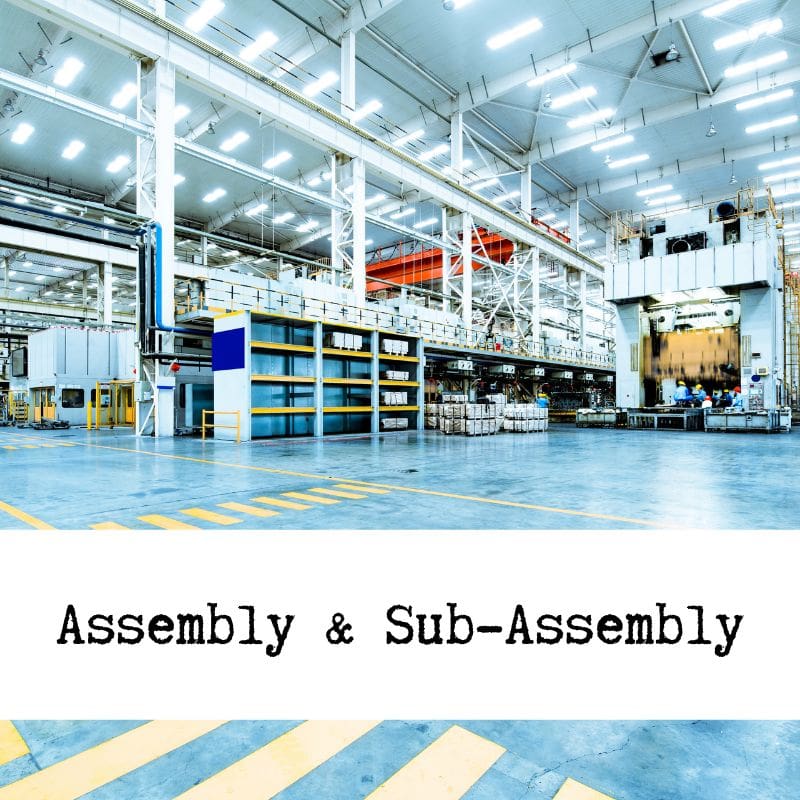
Manufacturers Regularly Require Assembly Services
Manufacturers often produce parts that require assembly of some sort, and they must choose the best way to accomplish this process. They can either perform assembly processes within their own manufacturing facility, or they can outsource these services to an experienced contract assembly provider. Manufacturers who choose to work with an experienced assembly provider often realize many benefits from companies that provide skilled technicians experienced in using automated assembly equipment. This also allows manufacturers to focus on their niche market to spur growth and increase revenue.
Contract Assembly Houses Provide All Types of Assembly Services
Some companies focus only on assembling products and help manufacturers by taking all required components and assembling them correctly and efficiently. Contract assembly houses can provide all types of assembly services whether taking two products to create one final, finished product, or taking multiple components to create one larger component that still must be assembled or connected to a larger part. This would be the most notable difference between assembly and subassembly.
Assembly vs. Subassembly
A finished product’s Bill of Materials, often referred to as the BOM, includes everything that is required to produce a final, finished product. Manufacturers create a BOM to include all components and quantities required to produce that particular part such as: raw materials, required labor, press time, additional manufacturing processes, packaging, any needed rework, assembly or subassembly processes, and any other unique materials or labor needed to produce the finished product.
Some finished products require assembly, or subassemblies that may consist of other subassemblies. This leaves some manufacturers wondering, what is the difference between assembly and subassembly? According to ScienceDirect.com, a subassembly is defined as a standard subassembly of components that can be readily put into, or pulled out of another unit or circuit. For example, a subassembly of parts that creates an internal combustion engine is part of a much larger assembly such as an automobile. In even simpler terms, when creating a bicycle, for example, the wheel structures would be a subassembly that are attached to the final bike chassis.
Subassemblies exist for even smaller items in a wide array of industries and applications. The benefit of subassemblies is that they add value when manufacturers receive an assembled component that is ready to install in their next application.
How to Outsource Assembly and Subassembly for Maximum Benefit
Manufacturers that require any type of assembly process should diligently research and evaluate all costs associated with performing the services in-house or outsourcing to an experienced assembly contractor. Typically, these processes require capacity to set up dedicated assembly lines and training of personnel to ensure accuracy and high quality. Manufacturers can realize cost savings in many areas including freeing up their own facility space and personnel as well as receiving high-quality assembled components.
Original equipment manufacturers (OEMs) should consider several factors to ensure they choose the best assembly or subassembly provider for their products. Some of the most important considerations include:
- Capacity – be sure that your assembly provider has the capacity to set up dedicated assembly processes for your components to ensure full accountability and accuracy of all components received.
- Capability – your assembly provider should have proven capabilities in assembling similar components with skilled staff and required equipment.
- Cost – the cost of outsourcing assembly goes beyond what a contract assembler will charge for providing the process and returning your assembled components. Manufacturers must also fully understand and evaluate in-house assembly or subassembly costs.
- Value-added services – experienced assembly providers deliver value added services such as packaging, palletizing, and shipping to customer specification.
PPS Provides Assembly and Subassembly Solutions
Peoria Production Solutions, PPS, is an experienced contract assembly provider with more than 80 years of experience. We offer the capacity, capability, competitive pricing, and value added services to improve your production process with high quality and cost-efficient savings.
PPS is an industry-leading contract assembly, kitting, and packaging company providing solutions that improve your manufacturing or production process. We offer the unique ability to focus on jobs, not profits, as a fully sustainable not-for-profit organization. Contact us to learn more about our high-quality, cost-efficient, and experienced assembly and subassembly services.

